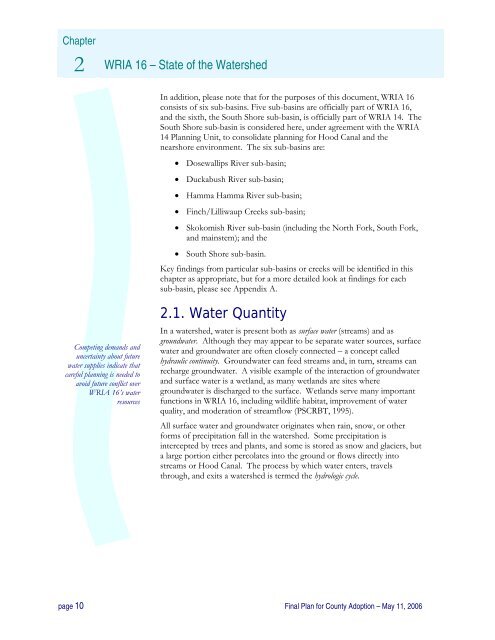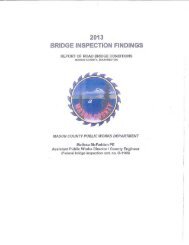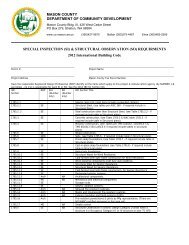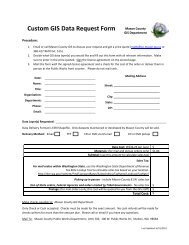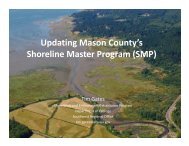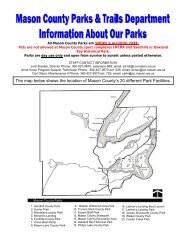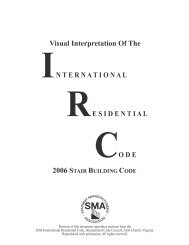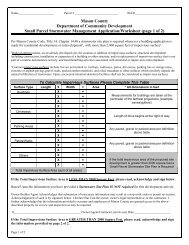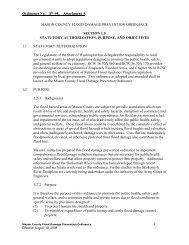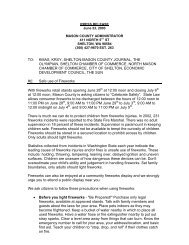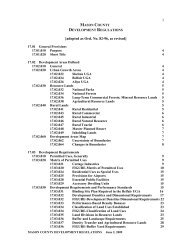Watershed Management Plan - Mason County
Watershed Management Plan - Mason County
Watershed Management Plan - Mason County
Create successful ePaper yourself
Turn your PDF publications into a flip-book with our unique Google optimized e-Paper software.
Chapter<br />
2 WRIA 16 – State of the <strong>Watershed</strong><br />
In addition, please note that for the purposes of this document, WRIA 16<br />
consists of six sub-basins. Five sub-basins are officially part of WRIA 16,<br />
and the sixth, the South Shore sub-basin, is officially part of WRIA 14. The<br />
South Shore sub-basin is considered here, under agreement with the WRIA<br />
14 <strong>Plan</strong>ning Unit, to consolidate planning for Hood Canal and the<br />
nearshore environment. The six sub-basins are:<br />
• Dosewallips River sub-basin;<br />
• Duckabush River sub-basin;<br />
• Hamma Hamma River sub-basin;<br />
• Finch/Lilliwaup Creeks sub-basin;<br />
• Skokomish River sub-basin (including the North Fork, South Fork,<br />
and mainstem); and the<br />
• South Shore sub-basin.<br />
Key findings from particular sub-basins or creeks will be identified in this<br />
chapter as appropriate, but for a more detailed look at findings for each<br />
sub-basin, please see Appendix A.<br />
Competing demands and<br />
uncertainty about future<br />
water supplies indicate that<br />
careful planning is needed to<br />
avoid future conflict over<br />
WRIA 16’s water<br />
resources<br />
2.1. Water Quantity<br />
In a watershed, water is present both as surface water (streams) and as<br />
groundwater. Although they may appear to be separate water sources, surface<br />
water and groundwater are often closely connected – a concept called<br />
hydraulic continuity. Groundwater can feed streams and, in turn, streams can<br />
recharge groundwater. A visible example of the interaction of groundwater<br />
and surface water is a wetland, as many wetlands are sites where<br />
groundwater is discharged to the surface. Wetlands serve many important<br />
functions in WRIA 16, including wildlife habitat, improvement of water<br />
quality, and moderation of streamflow (PSCRBT, 1995).<br />
All surface water and groundwater originates when rain, snow, or other<br />
forms of precipitation fall in the watershed. Some precipitation is<br />
intercepted by trees and plants, and some is stored as snow and glaciers, but<br />
a large portion either percolates into the ground or flows directly into<br />
streams or Hood Canal. The process by which water enters, travels<br />
through, and exits a watershed is termed the hydrologic cycle.<br />
page 10 Final <strong>Plan</strong> for <strong>County</strong> Adoption – May 11, 2006


